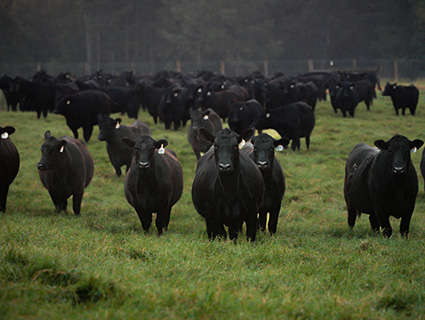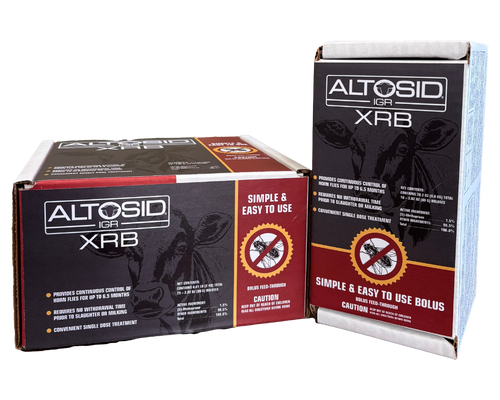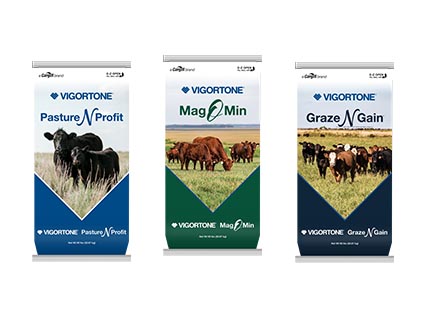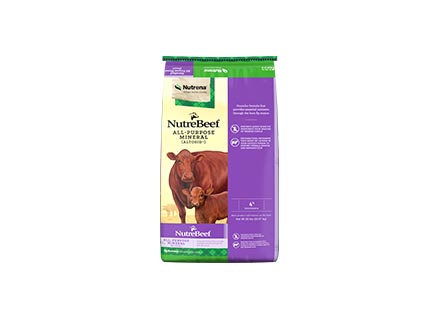Controlling Flies in Beef Cattle
 In a perfect world, there would be products and management tactics available to rid cow herds of ALL flies. While this may not be realistic, producers can control and subside flies by being proactive and intentional with fly control programs. The three most economically significant flies are horn flies, face flies and stable flies. There can be varying results with each fly control program and even from year to year, but it is important to keep in perspective the damage these three flies can do if we do not attempt to manage them. The horn fly alone is estimated to cost the United States cattle business over $1 billion annually in lost weaning and yearling weights! There are many options and programs that work to control flies. If producers already have a fly control program in place, it is vital to conduct periodic fly counts to verify the program is working and economic losses are not a problem.
In a perfect world, there would be products and management tactics available to rid cow herds of ALL flies. While this may not be realistic, producers can control and subside flies by being proactive and intentional with fly control programs. The three most economically significant flies are horn flies, face flies and stable flies. There can be varying results with each fly control program and even from year to year, but it is important to keep in perspective the damage these three flies can do if we do not attempt to manage them. The horn fly alone is estimated to cost the United States cattle business over $1 billion annually in lost weaning and yearling weights! There are many options and programs that work to control flies. If producers already have a fly control program in place, it is vital to conduct periodic fly counts to verify the program is working and economic losses are not a problem.
Horn Flies
Horn flies have the largest economic impact of any species in the U.S. Horn flies are small biting flies that rely on 20-30 blood meals per day from a host animal. Therefore, horn flies do not stray far from their host animal, and they use fresh manure to lay eggs and reproduce. The economic threshold for horn flies is 20-30 flies per side. Research has documented that in instances of moderate to heavy horn fly infestation (>100 flies per side), calf weaning weights were 10-25 pounds lighter. In today’s economic environment, that provides anywhere from $15 to $38 per head to control horn flies and still generate a return on investment. There are many methods of controlling horn flies, but chemical methods seem to be the most common and effectively used options. Chemicals can be used in tags, sprays, rubs, pours, feed additives and paintball guns. All those options basically come down to 3 active ingredients, pyrethroids, organophosphates and insect growth regulators. Organophosphates and pyrethroids can be delivered through most delivery methods. It is important to rotate to a different active ingredient at minimum one out of every three years. Producers who use fly tags need to make sure to use the number specified on the label and always remove them as recommended to avoid resistance. There have been several documented cases of horn fly resistant to pyrethroids, so effective control may not be reached in some places where the flies have developed resistance. Sprays and pour on insecticides can also be effective at controlling horn flies, but most products available on the market only provide coverage for 7-20 days, which is too time consuming for producers. The other class that hasn’t been discussed yet is insect growth regulator (IGR). IGR is an oral larvicide that disrupts the lifecycle of larvae and prevents them from hatching into adults. When fed, it passes through to the manure and prevents horn flies from reproducing in the manure. IGR is extremely effective as long as dosage and delivery are consistently supplying the manure with enough active ingredient. Most IGR for pasture animals is delivered as S-Methoprene or Tetrachlorvinphos and fed in the free choice mineral. The primary difference between Tetrachlorvinphos and S-Methoprene is Tetrachlorvinphos kills dung beetles, which are beneficial in composting manure. IGR has a high efficacy but in many cases failure to achieve horn fly control is a result of inadequate consumption of the active ingredient. That’s why it is critical to keep mineral available at all times and intervene when mineral intake does not achieve labeled recommendation by relocating the mineral feeder closer to water sources or loafing areas. Cargill provides multiple options for quality free choice minerals with several different CTC and IGR options. We also have IGR only products available if you plan to avoid getting a VFD.
Horn Fly Control through a single application bolus, Altosid® IGR XRB
If you are looking for an alternative way to provide more flexibility and convenience in your fly control program, Altosid IGR XRB may be an answer. The single application bolus is orally administered, it settles in the cow’s rumen where it will dissolve over time, releasing the active ingredient, (S)-Methoprene, consistently for up to 195 days.

Stable Flies
The other biting fly of economic importance is the stable fly. Stable flies typically feed on the legs of cattle and have a very irritable bite. The economic threshold for stable flies is five per leg. They can be particularly damaging in confinement cattle operations. Stable flies reproduce in decaying organic matter and the best method of stable fly control is good housekeeping. Stable flies travel longer distances than horn flies but can also be killed by contact killers. The very best method to prevent stable flies is to clean up hay feeding areas or any other large sources of decaying organic matter in the spring before stable flies become an issue.
Face Flies
Last but not least is the face fly. Face flies are not biting flies, but they feed on excretions from the cattle, specifically in the eyes. Face flies cause economic damage by irritating the eye and increasing the incidence of pinkeye. Face flies are much more difficult to kill as they spend much of their time away from the animal in shady vegetative areas. Face flies can be killed by chemical methods and the most popular methods being fly tags or dusters.
Fly Control Programs
Economics, like in any business, are the critical driver of any fly control program. Controlling horn flies alone can return 10-25 pounds of weaned calf. In most cases, it takes a combination of chemical treatments to manage fly populations, but IGR is a very cost effective method of controlling horn flies. Adding IGR costs approximately $0.02/head/day. If IGR is fed from March 15th to November 15th it will cost $4.90/ head, but the value of controlling horn flies is a minimum of $15/ head! There are multiple options available to control flies in a herd. IGR can be an effective tool in fly control programs and is the only tool available that does not require additional labor. Practicing good farm housekeeping with an IGR or other chemical fly control will result in more pounds of calf sold.
If you do not have a fly control program or are not happy with your current program, work with your Cargill representative to get flies under control, because they are costing you more than you think. Horn flies alone cost the US Beef Industry over $1 billion annually. 1
References:
1 Managing Horn Flies | UNL Beef
Altosid® is a registered trademark of Wellmark International
Explore Cargill Mineral Products Available with Altosid® IGR
Right Now Minerals
Right Now® minerals are formulated to allow you to match the mineral feeding program to the growing seasons, forage conditions and nutritional needs of your cattle.

Vigortone Minerals
Wherever you are, Vigortone® works. Formulated for every stage of production with targeted nutrition for every region, Vigortone delivers consistent animal performance.
NutreBeef All-Purpose with Fly Control
NutreBeef® products are designed to meet all the needs of cattle in every stage of development and phase of production.


